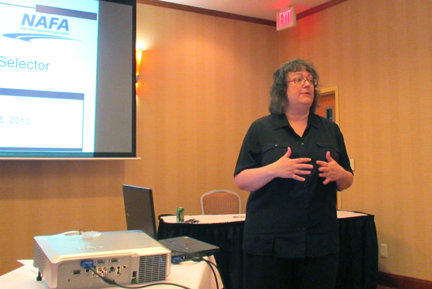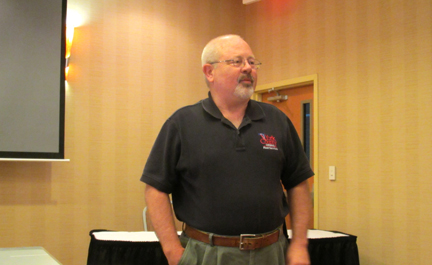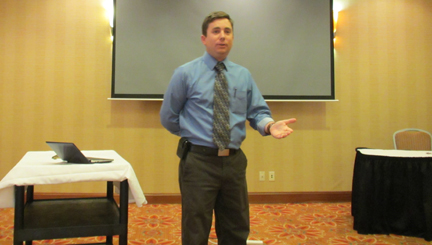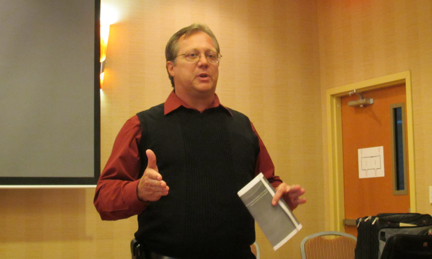Old Dominion Chapter On The Choice Between Repairing Or Replacing
NAFA's Old Dominion Chapter meeting on September 25 went above and beyond concerning the subject of the choice between repairing or replacing vehicles, by offering a representative from each fleet segment to discuss their individual approaches.
NAFA Senior Vice President Ruth Alfson, CAFM, started things off with a presentation on developing an effective vehicle selector list, one of the most important aspects of the fleet manager's work as it dictates nearly everything they will do following that decision.
Alfson's discussion led nicely into the primary topic of the day: How to decide when to repair your vehicles versus when to replace them. The subject was broken down by individual user classes, with various speakers touching on how that decision is determined for their sectors. Starting off was Susan Ruddick of PHH, providing the corporate fleet side.
Denny Kincaide of York County (400 vehicles in fleet) offered the county fleet perspective. Among factors that Kincaid is engaged with is a change in what miles would determine necessary change, from 100,000 to 130,000 miles for York County vehicles; the use of computer software to help manage these decisions based on specific criteria; and assessing the used car market, depending on the year, to see what the remarketing options are.
Kincaide also said that, in considering vehicles, it is important to take into consideration how far away the vendor you choose is. You will want them close by for any warranty work.
Mike Biggs, (not pictured) City of Richmond (2500 vehicles in fleet) had the city fleet perspective, which is further complicated by shifting priorities and budgetary constraints. "It’s a juggling act in these economic times," Biggs said.
Old Dominion Vice Chair Mike Bisogno, CAFM, Commonwealth of Virginia Dept. General Services Office of Fleet Management (4000 vehicles in fleet) had the state fleet end of things where 450-500 vehicles are replaced per year. For state fleets there's "No 'right' way...(and) there are many ways depending on situation," Bisogno said.
Theoretically, his fleet should replace at 85,000 miles/ 7 years, but usually replaces at 100,000-110,000 miles. One of these reasons for it, as most fleets have experienced, is to stretch out that value in the face of tighter budgets.
"It is not a good idea to replace a large number of vehicles in a one-year period," Bisogno said. "It makes it difficult to keep up with replacement of all vehicles based on fluctuating budgets in the years to come."
Rounding out the topic was Kevin Crain, Commonwealth of Virginia Dept. of General Services Office of Fleet Management, with the USAF fleet perspective. His responsibilities are more complex given the kinds of environments his vehicles may be sent to. "You must understand the mission of the vehicle," Crain said. "Every vehicle in (our) fleet is world-wide deployable. It may be brought to a place with gunfire or not, but regardless, it must be ready to run."
And unlike other fleet types, military fleets need immediate driver feedback when vehicles are going wrong. "If you have a problem with a vehicle you MUST let someone know because there are no other vehicles 'coming in' unless previously scheduled. New vehicles are ordered/delivered ONLY one time per year! In an emergency situation, they may get a vehicle from another base but this would only be for something like a fire vehicle with which they cannot launch planes without."
The Old Dominion Chapter thanks all the speakers for the day's highly educational and detailed efforts.
Special thanks to Chapter Chair Jodie Bentley, CAFS, and Secretary Christina Covaney for materials for this article.





